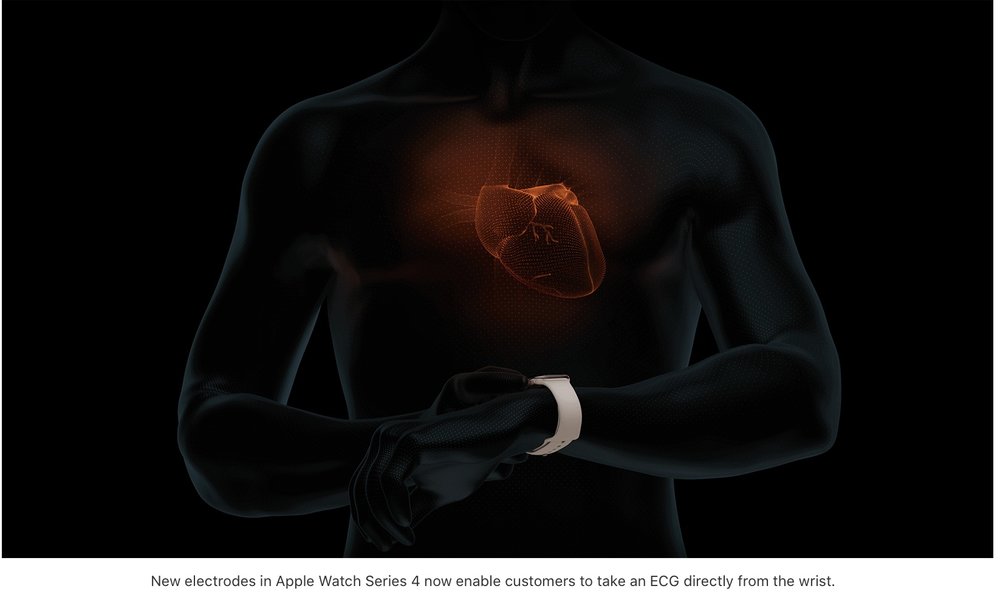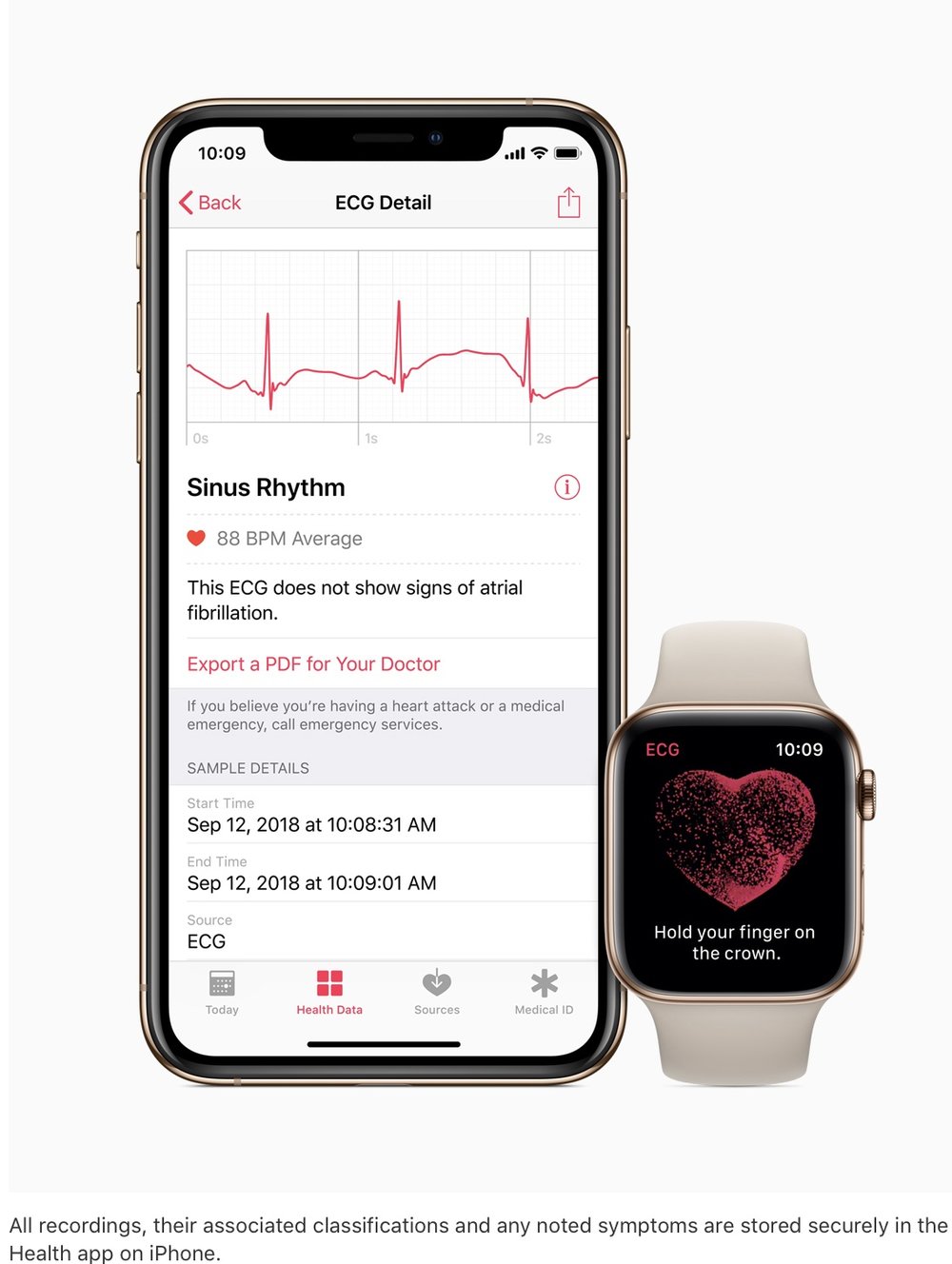watchOS 5.1.2 is coming later today and will introduce the ECG app (for the Apple Watch Series 4). It marks the first direct-to-consumer product that enables customers to take an electrocardiogram right from their wrist, capturing heart rhythm in a moment when they experience symptoms like a rapid or skipped heart beat and helping to provide critical data to physicians.

The irregular rhythm notification feature on Apple Watch can now also occasionally check heart rhythms in the background and send a notification if an irregular heart rhythm that appears to be atrial fibrillation (AFib) is identified. Apple worked with the Food and Drug Administration (FDA) for a number of years to receive De Novo classification for the ECG app and the irregular heart rhythm notification, making the features available over the counter.
The ECG app and irregular heart rhythm notification feature is designed to help users identify signs of AFib, the most common form of irregular rhythm. When left untreated, AFib is one of the leading conditions that can result in stroke, the second most common cause of death around the world. The CDC estimates AFib can affect up to 2% of the younger population and nine percent of those 65 years and older in the U.S.
New electrodes built into the back crystal and Digital Crown on Apple Watch Series 4 work together with the ECG app to enable customers to take an ECG similar to a single-lead reading. To take an ECG recording at any time or following an irregular rhythm notification, users launch the new ECG app on Apple Watch Series 4 and hold their finger on the Digital Crown.

As the user touches the Digital Crown, the circuit is completed and electrical signals across their heart are measured. After 30 seconds, the heart rhythm is classified as either AFib, sinus rhythm or inconclusive. All recordings, their associated classifications and any noted symptoms are stored securely in the Health app on iPhone. Users can share a PDF of the results with physicians.
Using the optical heart sensor in Apple Watch Series 1 or later, the irregular rhythm notification feature will occasionally check the user’s heart rhythm in the background for signs of an irregular heart rhythm that appears to be AFib and alerts the user with a notification if an irregular rhythm is detected on five rhythm checks over a minimum of 65 minutes.
Sumbul Desai, MD, Apple’s vice president of Health, notes that the ECG app’s ability to accurately classify an ECG recording into AFib and sinus rhythm was validated in a clinical trial of around 600 participants. Rhythm classification from a gold standard 12-lead ECG by a cardiologist was compared to the rhythm classification of a simultaneously collected ECG from the ECG app.
The study found the ECG app on Apple Watch demonstrated 98.3% sensitivity in classifying AFib and 99.6% specificity in classifying sinus rhythm in classifiable recordings. In the study, 87.8% of recordings could be classified by the ECG app.

The irregular rhythm notification feature was recently studied in the Apple Heart Study. With over 400,000 participants, the Apple Heart Study was the largest screening study on atrial fibrillation ever conducted, also making it one of the largest cardiovascular trials to date. A subset of the data from the Apple Heart Study was submitted to the FDA to support clearance of the irregular rhythm notification feature.
In that sub-study, of the participants that received an irregular rhythm notification on their Apple Watch while simultaneously wearing an ECG patch, 80% showed AFib on the ECG patch and 98 percent showed AFib or other clinically relevant arrhythmias.
To enable these new heart features, customers will be taken through an onscreen setup flow that includes details about who can use these features, what the features can and cannot do, what results users may get, how to interpret those results and clear instructions for what to do if users are feeling symptoms that require immediate medical attention.
